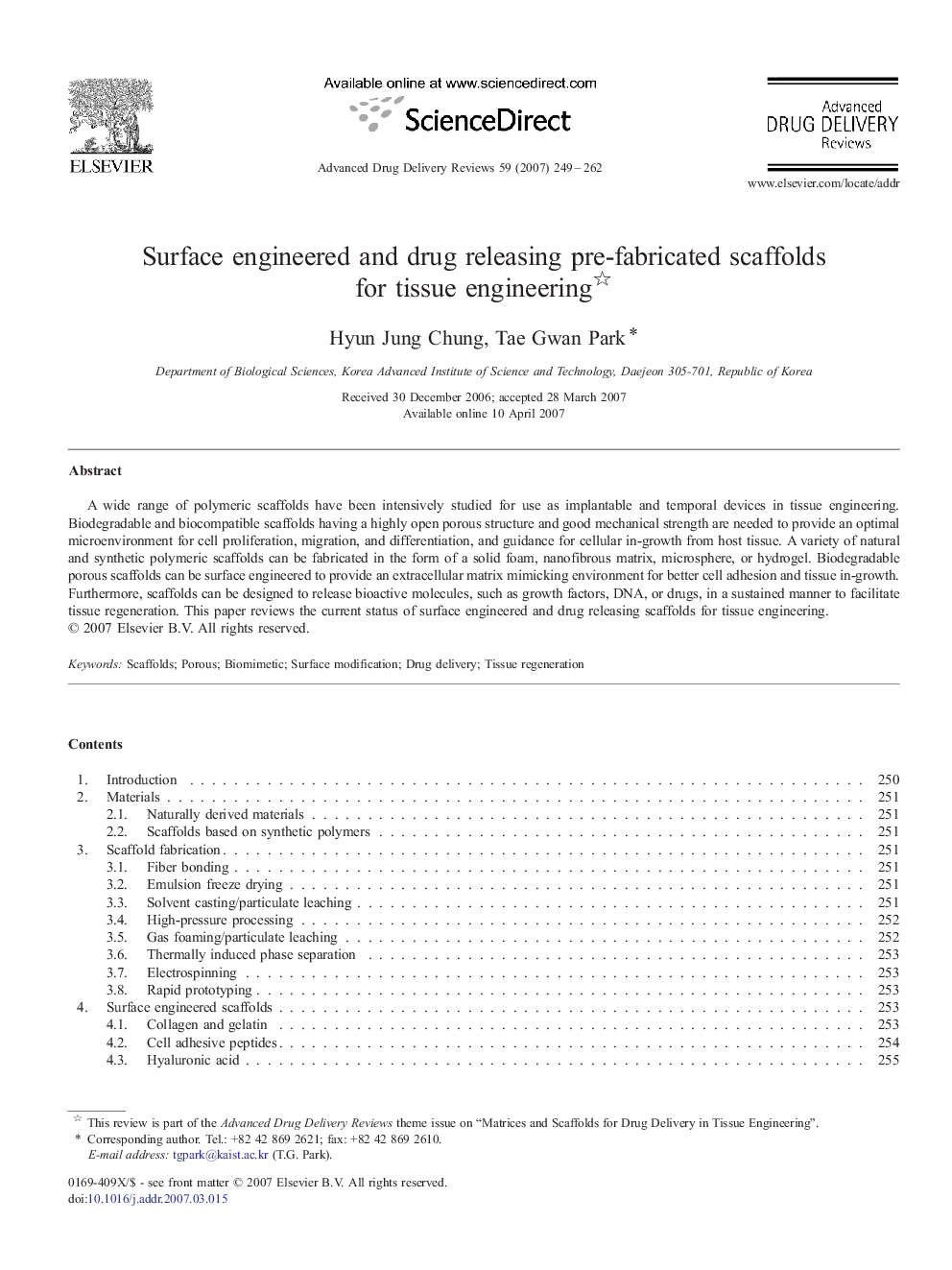| Article ID | Journal | Published Year | Pages | File Type |
|---|---|---|---|---|
| 2072350 | Advanced Drug Delivery Reviews | 2007 | 14 Pages |
A wide range of polymeric scaffolds have been intensively studied for use as implantable and temporal devices in tissue engineering. Biodegradable and biocompatible scaffolds having a highly open porous structure and good mechanical strength are needed to provide an optimal microenvironment for cell proliferation, migration, and differentiation, and guidance for cellular in-growth from host tissue. A variety of natural and synthetic polymeric scaffolds can be fabricated in the form of a solid foam, nanofibrous matrix, microsphere, or hydrogel. Biodegradable porous scaffolds can be surface engineered to provide an extracellular matrix mimicking environment for better cell adhesion and tissue in-growth. Furthermore, scaffolds can be designed to release bioactive molecules, such as growth factors, DNA, or drugs, in a sustained manner to facilitate tissue regeneration. This paper reviews the current status of surface engineered and drug releasing scaffolds for tissue engineering.
